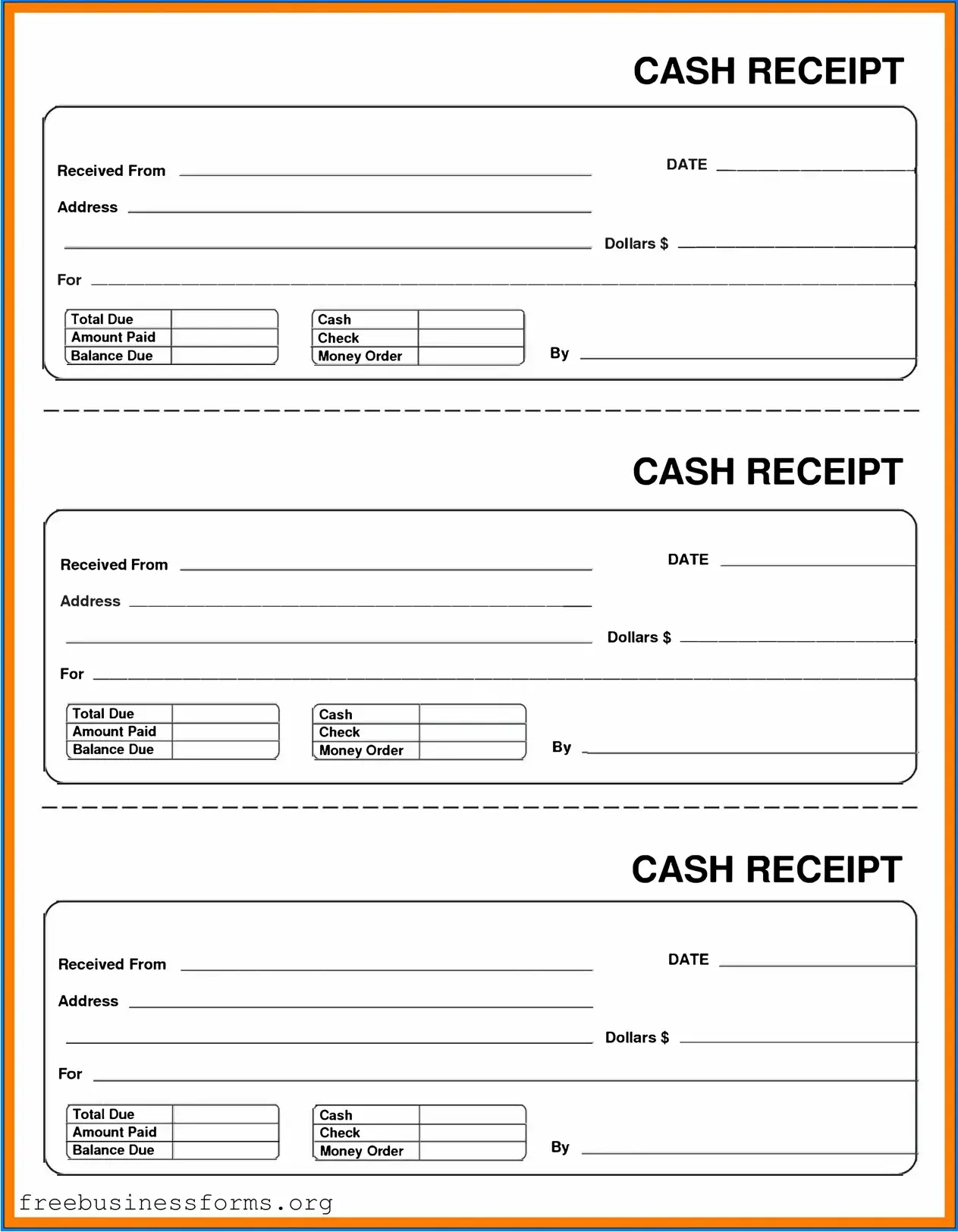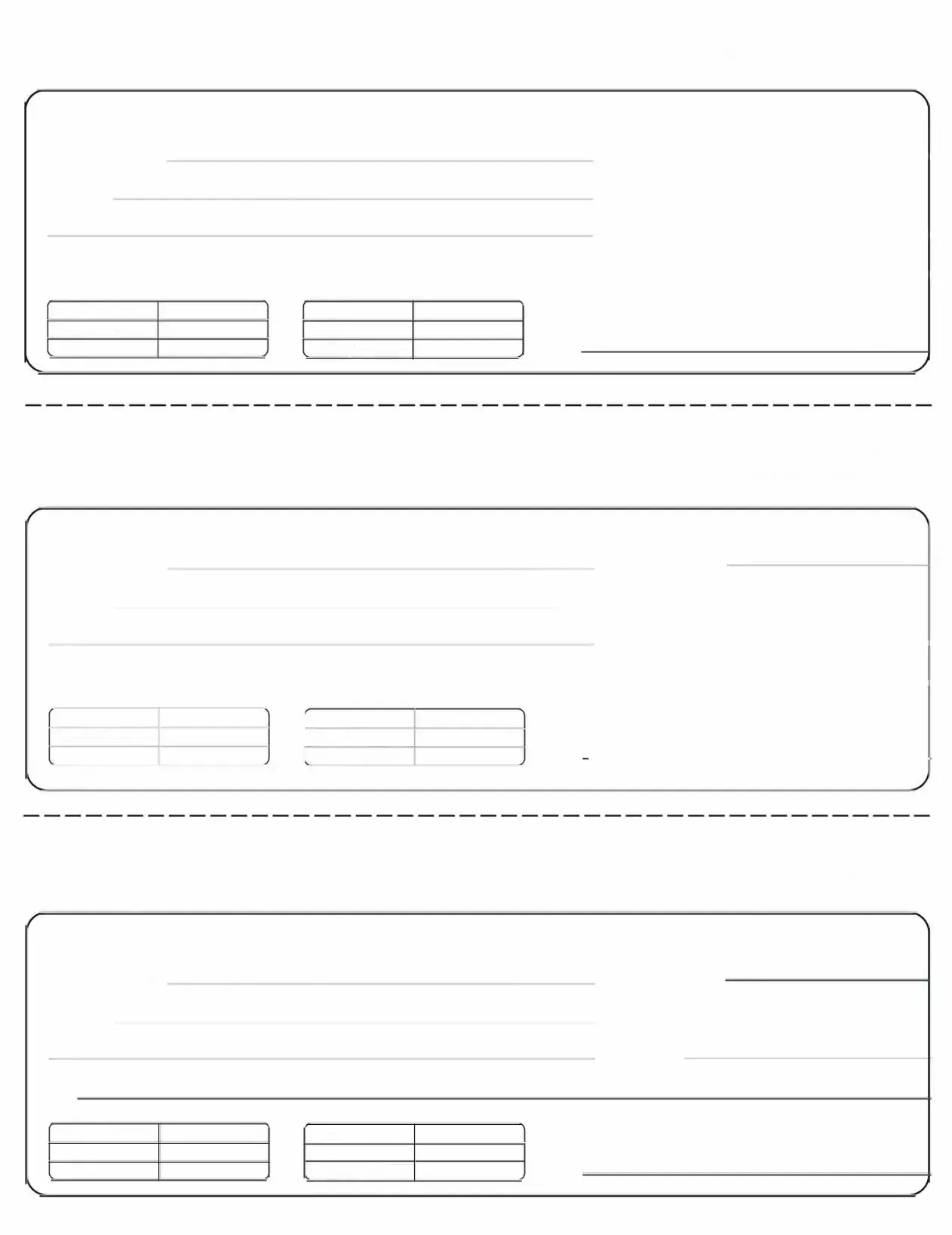The Cash Receipt form serves as an essential document for recording transactions where cash is received. It is commonly used by businesses, non-profits, and government entities to ensure accurate tracking of incoming funds. This form typically includes critical details such as the date of the transaction, the amount received, the method of payment—whether cash, check, or credit card—and the purpose of the payment. Additionally, it often requires the signature of the individual receiving the cash, which adds a layer of accountability. Each entry on the form should be clear and precise, as this document not only aids in financial record-keeping but also plays a vital role in auditing and reconciliation processes. By maintaining accurate Cash Receipt forms, organizations can uphold transparency and foster trust with stakeholders, while also ensuring compliance with financial regulations.

